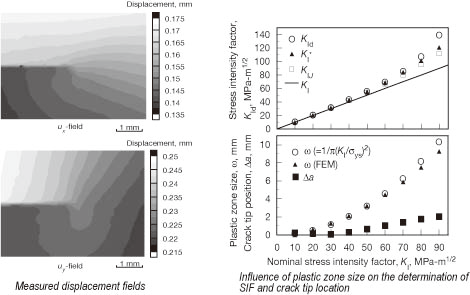

An experimental-numerical hybrid method for the stress separation in photoelasticity is proposed in this study. In the proposed method, boundary conditions for a local finite element model, that is, tractions along boundaries are inversely determined from photoelastic fringes. Two algorithms are proposed for determining the boundary condition. One is a linear algorithm in which the tractions are obtained by the method of linear least-squares from both principal stress difference and principal direction. Another is the nonlinear algorithm in which the tractions are determined only from the principal stress difference. After determining the boundary conditions for the local finite element model, the stresses can be obtained by finite element direct analysis. The effectiveness is demonstrated by applying the proposed method to a perforated plate under tension and contact problems. Results show that the boundary conditions of the local finite element model can be determined from the photoelastic fringes and then the individual stresses can be obtained by the proposed method. Furthermore, the stresses can be evaluated even if the boundary condition is complicated such as at the contact surface. It is expected that the proposed method can be powerful tool for stress analysis.
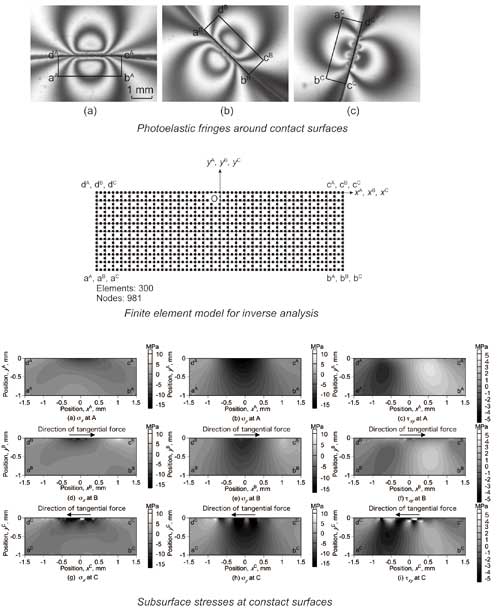
A method for determining stresses from isopachic contours obtained by interferometry or thermoelasticity is proposed in this paper. A Poisson equation that represents the relationship between the sum of principal stresses and an Airy stress function is solved using a finite element method. Therefore, the distribution of the Airy stress function can be obtained from the measured isopachic contours. Then, the stresses are obtained from the Airy stress function. Boundary conditions are required for solving the Poisson equation. In the present stage, tractions along the boundary are used for obtaining the Neumann boundary condition. Results of simulation and experiment indicate that stress components can be obtained from isopachics by the proposed method.
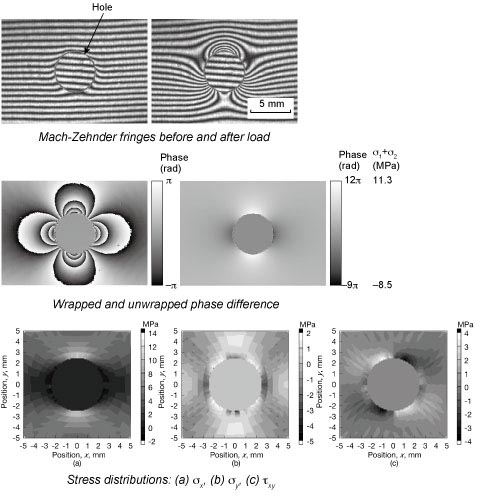
An instantaneous phase-stepping and subsequent phase analysis method, using a CCD camera with a form-birefringent micro-retarder array, has been proposed for interferometry and photoelasticity. An optical setup of a polarization interferometry using a Twyman–Green interferometer with two polarizers is constructed to analyze the distribution of out-of-plane displacement. Light emerging from the interferometer is recorded using a CCD camera that has micro-retarder array on the CCD plane. This micro-retarder array has four different principal directions. That is, an image obtained by the CCD camera contains four types of data corresponding to four different optical axes of the retarder. The four images separated from the image recorded by the CCD camera are reconstructed using gray-level interpolation. Then, the distributions of the Stokes parameters that represent the state of polarization are calculated from the four images. The phase distribution of the interference fringe pattern produced by the Twyman–Green interferometer is then obtained from these Stokes parameters. In the case of photoelasticity, the birefringence parameters, that is, the angle of the principal axis and the phase retardation are also obtained from the Stokes parameters. This method is applicable to real-time inspection of optical elements as well as the study of the mechanics of time-dependent materials because multiple exposures are unnecessary for sufficient data acquisition in the completion of data analysis.
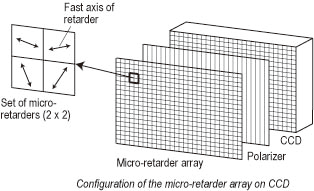
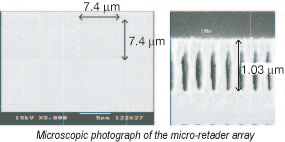

The stress fields around an oscillating crack tip in a quenched thin glass plate are observed using an instantaneous phase-stepping photoelasticity. The successive images around the propagating crack are recorded by a CCD camera with a pixelated micro-retarder array. Then, the phase maps of the principal stress difference and the principal direction are easily obtained even though the photoelastic fringes cannot be visualized. The path of the crack growth, the stress intensity factors, and the crack tip constraint are obtained from these phase distributions. Results show that the mode I stress intensity factor and T-stress vary remarkably with the crack growth. In addition, the results show that the mode-II stress intensity factor exists even though the crack propagates smoothly.
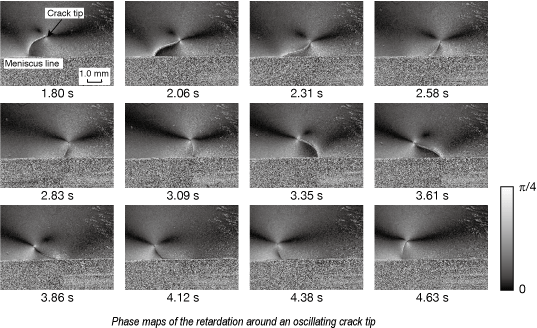
An experimental technique for measuring and visualizing strain distribution on the facial skin is developed. A stereovision technique based on three-dimensional digital image correlation is employed for obtaining the displacement distribution on a human face. Time-variation of the movement of facial skin surface is obtained form the consecutive images obtained using a pair of high-speed cameras. The strains on the facial skin surface are then obtained from the measured displacements. The performance of the developed system is demonstrated by applying to the measurement of the strain on facial skin surface during the production of sound. Results show that the strains on the facial skin can be visualized. Further discussion on the relationship between the creation of the wrinkle and the strains is possible by the developed system.
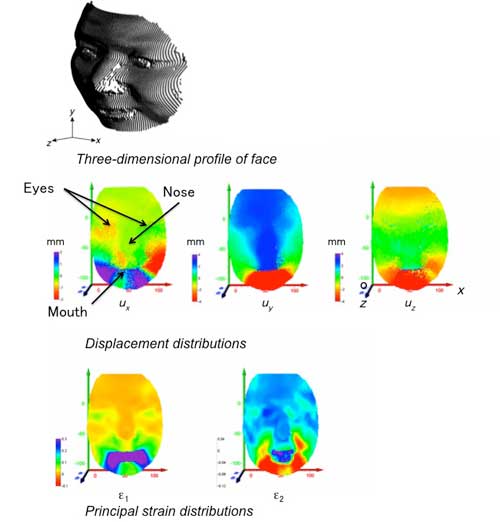
Digital image correlation technique is used for measuring vertical deflections of bridge girders during a bridge load testing. A bridge is loaded by a heavy cargo truck on the bridge road. Then, the deflection distribution is measured by digital image correlation. The applicability of digital image correlation to bridge deflection measurement is investigated by comparing the results obtained by digital image correlation with those obtained by displacement transducers. The effect of random pattern on an object surface is also investigated by measuring with and without random pattern. The results show that the deflection distributions of the bridge obtained by digital image correlation agree well with those obtained by the displacement transducers. In addition, the deflections can be measured even if the artificial random pattern is not applied to the surface of the bridge girder. It is emphasized that noncontact displacement measurement is possible by simple and easy procedure with digital image correlation for the structural evaluation of infrastructures.
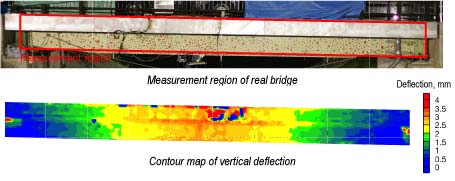
A new method for evaluating mode I, mode II and mixed-mode stress intensity factors from displacement fields around a crack tip obtained by experimental or numerical methods has been proposed. Using two displacement components on an orthogonal coordinate system, not only stress intensity factors but crack tip location, higher order terms in the series expansion of displacement fields and rigid body displacement components are determined simultaneously using nonlinear least-squares based on Newton-Raphson method. The validity is demonstrated by applying the proposed method to mixed-mode displacement fields obtained by digital image correlation, elasto-plastic displacement fields obtained by finite element method, and displacement fields around a fatigue crack obtained by electronic speckle pattern interferometry. The results show that the stress intensity factors are evaluated accurately from the displacement fields by the proposed method. Furthermore, they can be determined even if the material exhibits small scale plastic deformation. As stress intensity factors can be evaluated easily and accurately, it is expected that the proposed method can be applied to various fracture problems during experimental and numerical evaluation of structural components.
